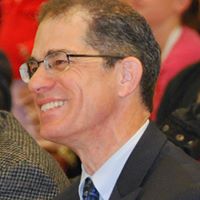Engaging Teachers in Classroom Walkthroughs
by Donald S. Kachur, Judith A. Stout,& Claudia L. Edwards
The authors of Engaging Teachers in Classroom Walkthroughs begin by outlining the
benefits of classroom walkthroughs. They
believe that walkthroughs are a great way for teachers to take responsibility
for their own professional learning. As
well, they allow teachers to observe best practices, and hence, lead to greater
consistency in effective instructional practices and, invariably, improved
student achievement. According to the
authors, classroom walkthroughs “transform the school into a learning
community.” (4)
The insights into best practices in classroom
walkthroughs they identify in this book are taken from a two-year study they
conducted involving 40 schools from 17 states and 6 schools from the Edmonton
Public School District.
In Chapter 2, the key features of a school’s
culture that need to be in place for walkthroughs to be accepted and valued are
discussed. These features are as follows:
·
A principal who is a lead learner – that is, one who not only
creates conditions that allow for classroom walkthroughs and arranges time for
teachers to meet to reflect on what they have observed but as well, “walks with
teachers” (17);
·
Shared leadership such that
teachers help create the vision for walkthroughs;
·
A trusting and safe school
environment;
·
A student-focused staff;
·
A community of learning; and
The focus of Chapter 3 is the five components
of walkthroughs. Component 1 is
protocols regarding frequency of walkthroughs and the length of observations –
the when of walkthroughs. The authors’ research suggests that,
typically, walkthroughs are around 10 minutes in length and conducted about 4
times a year. Component 2 is the who of walkthroughs, with research
suggesting that teams of teachers leading teachers is the best recipe for
success. The what of walkthroughs is captured by the third component – what
areas of instruction are observed. Teachers
are encouraged to select a focus question that is open-ended and
data-generating. Look-fors should then
be determined from the focus question. Component
4, the how of walkthroughs, is the
method of gathering data. Methods can
range from look-for checklists to open spaces for anecdotal comments. Walkthrough follow-up practices, including
specific feedback to teachers and whole-staff feedback form the fifth
component.
The authors emphasize that all steps of the
professional learning cycle should be followed with respect to walkthroughs:
plan, act, monitor, and review. Next
steps from the review of walkthroughs may include some or all of the following:
·
Professional development in
specific areas of instruction;
·
Coaching of teachers;
·
Identification of new focus areas
for walkthroughs; and
Chapter 4 provides 10 strategies for
involving teachers in walkthroughs. One
strategy recommended is that the purpose of walkthroughs is clearly defined and
communicated. A second involves careful
planning and gradual introduction of walkthroughs, including first visiting
other schools to observe how they conduct walkthroughs. A particularly important strategy is to
ensure all aspects of the walkthroughs are transparent so that teachers know
that “classroom walkthroughs are not a ‘gotcha’ activity.” (72)
Establishing clear norms both during and
after walkthroughs is another strategy discussed by the authors. For instance, during a walkthrough, visiting
teachers and administrators should leave clipboards and other materials outside
classrooms, be quiet and unobtrusive (never interrupting the teaching-learning
process), record only what they see (not what is not seen), and have “open,
nonjudgmental body language”. (74) Administrators
should prepare schedules that give teachers time to conduct walkthroughs with
strategies like combining classes to free up teachers and early release
days. Starting with teachers who
volunteer for walkthroughs is also suggested.
Some additional issues pertaining to
walkthroughs are discussed in Chapter 5.
One of the most important topics is strategies for engaging reluctant
teachers. The authors suggest anonymous
surveys of teacher to provide staff with a safe way to express their
concerns. They also recommend inviting
reluctant teachers to participate in walkthroughs at another school where the
process has been successful and to simply “walk with their peers”. (92) Celebrating at staff meetings successful
walkthrough experiences is also a good idea.
To prevent teacher union issues, the authors stress that walkthroughs
should be voluntary, non-evaluative, and not conducted during prep time. As well, teacher ownership of the process is
paramount.
Check out this link: Seven Things to Remember About Classroom Feedback http://ht.ly/vrTR5





This is method is clear and inspiring. As a participant, I have learned so much from the walk-through process. I went to one at St. Gabriel`s during the FDK P.D. in early November.
ReplyDelete